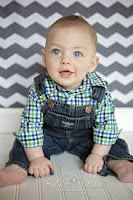Question
My 10-year-old son has been getting into trouble on multiple levels lately. He’s had two referrals at school within the last week, and his behavior at home is totally unacceptable. We've tried about everything we know to do at this point. How do you effectively discipline an obstinate child with autism (high functioning)?
Answer

Disciplining kids and teens with a developmental disorder like High-Functioning Autism (HFA) and Asperger's (AS) can be extremely difficult, so don't feel like you're the only parent who's ever had a problem with it. Obviously, your son does have to learn some things, and like all children, discipline will need to come into play.
Here are 21 critical disciplinary tips for parents of kids on the autism spectrum:
1. A common complaint of moms and dads with HFA and AS kids is the almost obsessive nature that the disorder can have with a certain object or action. Repeated words, a fixation on a collection, or the obsession with a character or television show is an indicator of HFA/AS, and as a parent, you have the power to limit the interest so that your youngster can experience other things. Make time each day for your youngster to indulge in his interest, but introduce other things to him as well.
2. As a parent, you may find yourself constantly explaining the condition to other moms and dads, teachers and friends. It is your duty to clear the path for your youngster's interactions by letting others know about the disorder and explaining how it might affect their relationship with your youngster. Creating awareness makes it easier for your youngster to interact with others who understand why he is different and don't take offense to the things he says and does.
3. Kids with an autism spectrum disorder thrive on clear rules, therefore posting a list of unacceptable behaviors and their consequences can be immensely helpful. For younger kids who cannot read yet, the rules should be reviewed periodically, and the list could also have visual illustrations to demonstrate the bad behaviors and punishments associated.
4. Kids with HFA and AS often have trouble both understanding communication and comprehending tone of voice. Sometimes a visual instruction is more effective than a verbal one, since your youngster can review the action as often as needed. Visuals can be used to suggest schedules, chores and even processes like the correct way to use the bathroom. Use pictures, photographs and cartoons to help your son understand what is expected.
5. Cognitive-behavioral therapies are often used to help a child on the autism spectrum unlearn his undesirable behaviors and replace them with more positive behaviors. Through this therapeutic technique, the child will learn to recognize the behaviors that need to be discontinued and come up with strategies to change his behaviors in the moment, until the change becomes permanent.
6. Create a list of behaviors and actions your youngster can't control due to the his diagnosis. These may include repetitive behaviors such as spinning or hand flapping, along with poor peer relations and easy distractablity. Your youngster may require help and guidance to overcome these issues. However, he should not be disciplined for behaviors related directly to the disorder.
7. Determine preventative instructions to help your youngster learn the appropriate way to handle difficult situations. Through role play, discussion and stories, you can provide your youngster with alternatives to hitting, yelling and throwing. Social stories, developed to help HFA and AS kids understand difficult situations, may be particularly helpful for teaching about appropriate and inappropriate behaviors. Because kids with the disorder often process information slowly, repeat your preventative instructions numerous times.
8. Develop an appropriate format for instructing your youngster about behaviors that are unacceptable and that will result in a negative consequence. Because the symptoms often include difficulty processing information, the list may need to be verbalized, written down and displayed in picture format. Copying the list and placing it throughout the house may also be helpful.
9. Establish a clear list of unacceptable behaviors for your youngster. Include insights and feedback from your spouse, your child’s doctor, babysitters, teachers and others who regularly interact with your youngster. These inappropriate behaviors include things like aggression, rude language, defiance and non compliance.
10. Implement a consequence plan. For each negative behavior you have identified as inappropriate from your youngster, decide the consequence. Discipline needs to be clear, concise, consistent and calm. If your youngster misbehaves, tell him in a few words what he did wrong and tell him the consequence (e.g., "Hitting your brother is inappropriate. Go sit in the timeout chair for 5 minutes").
11. Trouble can arise from friends who take advantage of an HFA or AS youngster. While your son may enjoy friendships, his unique situation may become a cause for concern when he is not able to properly communicate with friends or allows friends to take advantage of him. Only allow your son to spend time with other kids that you know and trust, under a parent's supervision. Once you become more comfortable with friends and social situations, you can slowly allow your son more freedom.
12. Children on the spectrum tend to enjoy being isolated because it is less stressful for them and they do not have to socialize with others. For these kids, time-outs can actually be a positive experience unless modified slightly. Removing kids from something fun might be a better alternative. For example, if a youngster loves to play with blocks, perhaps the blocks should go in the time-out area. A timer can be used, and this will help parents be more consistent when applying time-outs. Kids prone to destructive tantrums may be placed in a room that contains no breakable items or one that has pillows children can use to get out their frustrations.
13. Moms and dads need time-outs. If one parent is home with the "special needs" child all day long, that parent may need a break later. Moms and dads should pay attention to one another and give each other time to decompress when necessary. Develop a hand signal or other visual clue that lets the other know when these moments arise.
14. Moms and dads need to be in agreement when applying discipline to any youngster, but especially for kids with an autism spectrum disorder. If one parent thinks spanking is the appropriate punishment while the other feels that time-outs will be more effective, this will be confusing for the youngster. Time-outs, loss of privileges such as video games, TV, or weekly allowances, a fair fining structure (as in police ticketing) with a cost associated with each offending behavior or additional chores can all be used effectively.
15. Moms and dads should list the behaviors that they feel are most deserving of attention. This is an important step because some behaviors may need intervention or therapy in order to be eliminated rather than simple disciplinary tactics. For example, running in circles or humming may be habits that the youngster is using to self-soothe, even though these behaviors might drive moms and dads crazy. Odd self-soothing behaviors are common in kids on the autism spectrum with sensory processing (integration) issues, and they can be easily replaced with more appropriate ones (such as swinging on a swing or chewing on a healthy snack).
16. Review your discipline plan regularly. Consider your consistency regarding implementation of the plan. Evaluate your youngster's behavior and determine if the plan needs revisions based on her age, development or behavioral changes.
17. Social skills and the ability to communicate are often lost when a child has to deal with the HFA/AS condition. These children may have trouble observing the way others behave. In addition, a child with the disorder will have trouble reading and reacting correctly to another person's emotions, which could lead to a lack of relationship success. Despite this, the child can be taught social skills and effective communication techniques. These children can learn how to read nonverbal communication techniques and properly socialize if his learning occurs in an explicit and rote manner through social skills training.
18. Stickers, tokens and other incentives are effective ways of motivating your child. Also, whenever a problem behavior is identified, early interventions and tactics should be applied. These include replacing unacceptable self-soothing behaviors, relaxation techniques, floor time play therapy, music therapy, and auditory therapies, which help a youngster focus and listen better.
19. Whenever a bad behavior occurs, natural consequences will result. Sometimes, moms and dads must apply these consequences when kids are young. For example, if a youngster isn't sharing with another, that other youngster should be asked to leave. This will simulate the most likely scenario that will occur in a playground.
20. Your son likely has triggers that can cause him to become distraught or upset. Watch carefully for these triggers and distract your youngster when you sense a loss of temper or an outburst. For example, if your youngster thrives on a schedule and you need to change it for some reason, let your youngster know carefully and watch for signs of a meltdown during the change. You can then bring along a favorite item to distract your youngster from becoming upset.
21. Make sure your son “understands” what he is doing wrong! For example, do you talk back to him? Why, then, is it inappropriate for him to talk back to you? Maybe he has an issue with the other person's mind. This lack of “other awareness” or “Theory of Mind” is common in AS and HFA. Maybe he said something that was insulting, but didn't realize it. At that point, try and explain why it is that he said something wrong. Make sure you have explained to him what it is that he did, and why you are angry. It's not always easy, but sometimes reasoning it out in a logical way will help you vocalize what's wrong and will help him realize what “the rule” is and what he has to do to follow it.
Parents' Comments:
* Anonymous said... My opinion is to talk with the school and people who understand his functioning level and have them support you with ideas to help the home life. Spanking is not going to work on any child, I get the old school, I was born in the 70's but in today's day there is just no research that shows spanking helps at all especially l for a child that is different and not understanding. Honestly the spanking help the adult feel superior and there are other ways to gain his respect. So what I would do is figure out what he understands and there has to be something, computer, videos, activity that he loves. Make a chart for the wall that he can visible see. Once he get's through the day following the rules, let him have his preferred time with a reward, keep that up daily, if he does not, then he gets no reward. Continue doing this and spread out the time to a good week, a good month, etc....allow for mistakes and be forgiving. I hoep some of this helps, but without knowing your child, its hard for me to say. Please speake with school teachers, therapists etc....
• Anonymous said… Every child will be different, esp aspie kids. Know what your child's currency is(interests, what they love to do) and use that to create a balance. They need extra steps taken and consistency is the key. If they 'get it' after the 20th try, don't be discouraged when they forget it on the 25th try. Set clear boundaries for them and reward for good behavior hold the reward for bad behavior. I have my daughter repeat back to me what was wrong and what we should have done. Don't give up. You are your child's best advocate. It's hard, very hard. But your child is worth it. Once you pick your battle too, don't give in. Change strategies if you need to, but don't give in. I recently learned how much my daughter was 'getting it'. More than I expected. She has problems with 'expressive' language . Just don't give up
They are amazing kids!!.
• Anonymous said… Huge problem! Even when I slightly raise my voice is like I'm screaming at her. She has trouble self calming and haven't been able to send her to her room for many years as she would either hurt herself, break something or just become an emotional wreck. She's now 12 and started high school and it seems to be getting worse. However she is getting better at coming back and apologising
• Anonymous said… My son is 10yr, we have been dealing with it almost 2 yrs.? I have found no answers to your question. It is a daily battle.
• Anonymous said… Our son is HFA too. We tell him what is expected, what the reward is and what the consequence is/are. We always follow through. My husband and I are on the same page so he knows there is no "weaker" parent. Our son works towards earning his Friday McDonalds, watching Clone Wars and Legos, which are his favorite things. We use these as "carrots" for preferred behavior. We tell him what he has to do to earn them by listing them out in simple terms. We tell him that if he does a, b, or c (bad behavior) that he will not get the above. For example, if he gets a warning at school then no tv that day (as an immediate consequence) and he also loses out at the end of the week rewards. Our son has great difficulty reading facial expressions so we have to be direct and to the point. He sometimes says he forgives us after he gets into trouble and disciplined. We let him know that he was the one in the wrong and why, again and again if needed. Don't give up, they do get it.
• Anonymous said… social stories....teaching outside of the situation is almost a "have to" I have found. Spanking and raising a voice has other adverse effects way more than a typical child and that connection is definitely not there between misbehavior and consequence because what they did "wrong" wasn't wrong in their sight. I HAVE found with our kiddo, and everyone is different, is that he CAN learn what mom/dad thinks is right or wrong by repetition. He still might not "get it" deep down but he is still learning what is socially acceptable through my repeated reactions/expectations.
• Anonymous said… Yet another gem! Keep them coming!! It is nice to find info. on lots of issues on THE ONE PAGE!! Thank you for your concise and valuable information!
* Anonymous said... My son is 10 and his meltdowns are quite serious, I am a single mother and trying my hardest to deal with this aspect of his behavior.His teacher who thinks that my child is just being lazy says he is capable of more and will push him until he loses it then he will just shut down completely, sadly he doesn't seem to have one positive thing to say about my son who really does try his best but "struggles" with understanding the work.
Please post your comment below...










